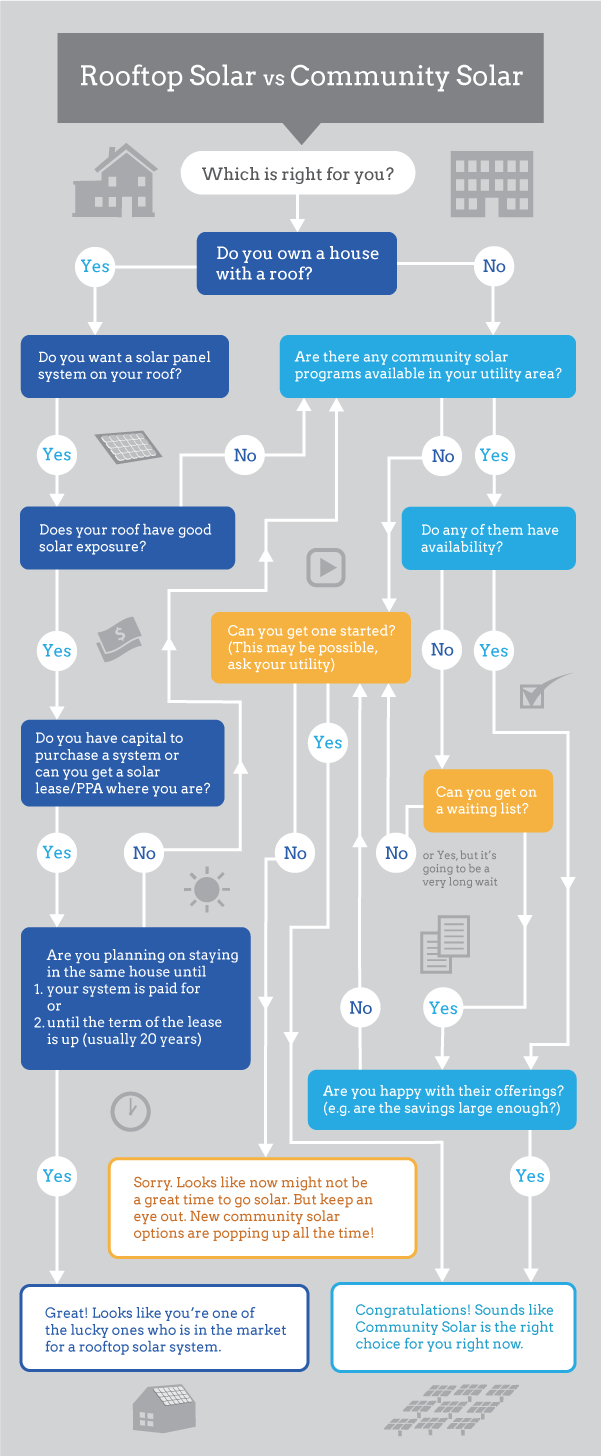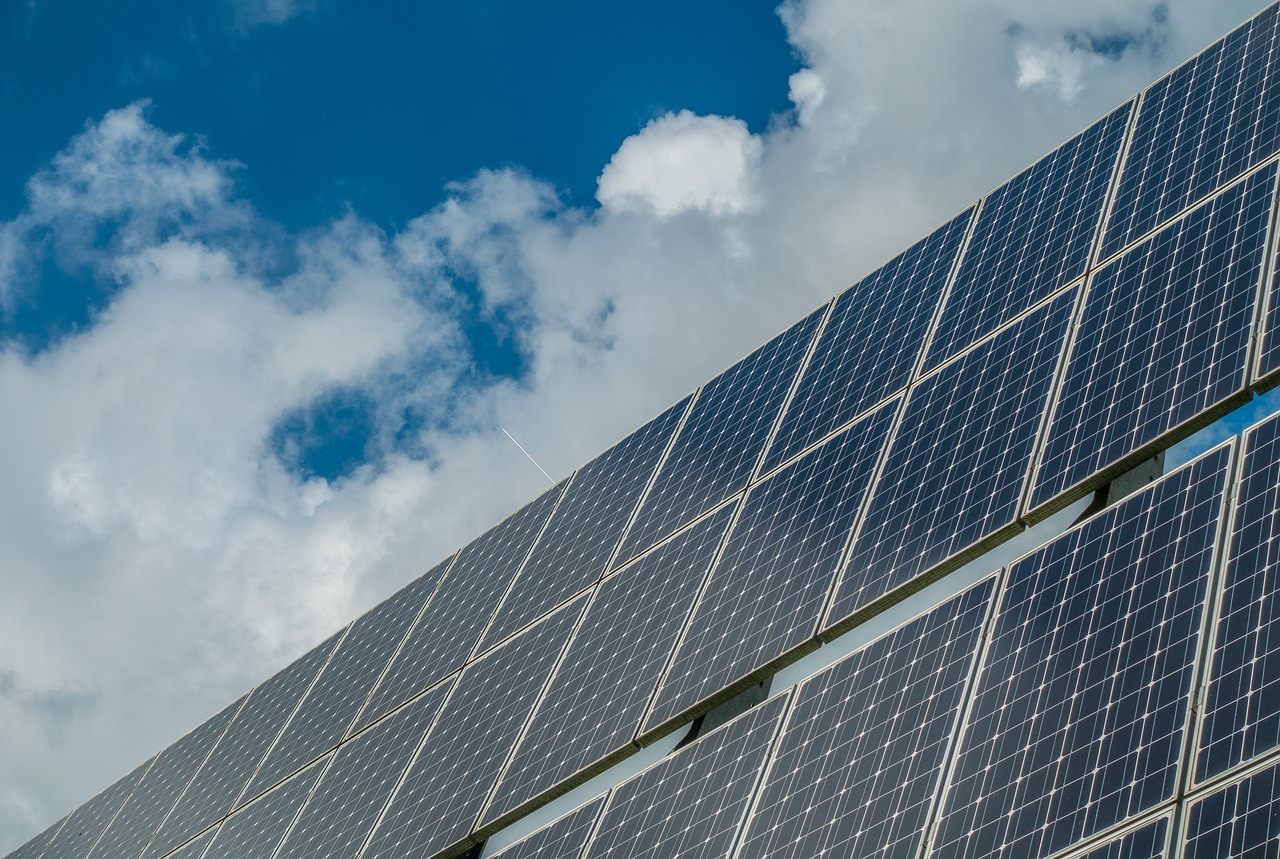It’s clear that solar power has been on an upward trajectory for the past few decades, thanks to breakthroughs in technology making solar energy more efficient and more cost-friendly for consumers. Investment in solar hasn’t only benefited us in terms of research and development, it’s also led to the creation of exciting new programs and approaches to solar. One such development has been the increasing popularity of community solar. But how does the community approach compare to traditional rooftop solar? Let’s take a look at some of the key aspects of both, and what they mean for solar consumers.
What is Rooftop Solar?
This is probably the kind of solar system that most people are familiar with. An array of solar panels is installed on the roof of a private property, commercial or residential, and generates power using photovoltaics. The generated energy then - and this varies depending on the specifics of the system in question - offsets the electricity consumption of the property and sends excess electricity back to the grid or stores it in a an onsite battery storage system. The size of rooftop systems generally lands somewhere in the 5kW - 25kW range, though again, this can vary depending on the system concerned.
What is Community Solar?
Now, for the lesser-known of the two, community solar. The clue is kind of in the name with this one - community solar involves one large solar project, generally managed and housed by an external solar plant, providing energy for a larger group of people. The community solar is an egalitarian approach to solar power, offering those who may have unsuitable properties or unfeasible roofs to take advantage of the benefits of solar power. As for the operation of the system, it’s largely similar to the rooftop flow, just on a bigger scale.
Which one is right for me?
Well, this depends on a number of variable factors, with everything from the feasibility of rooftop installation, to community solar eligibility coming into play. In addition, the systems offered by solar companies in your area and the nature of the community projects offered nearby should also be taken into consideration. Let’s look at a few key factors.
#1 - Cost
For rooftop solar, there a number of options available to finance the system. You can buy it outright or sign up for a lease, and many different kinds of loans can be used by prospective solar consumers. Once installed, the utility will take care of transmission and billing, where the solar consumer will benefit from the system by offsetting their electric bill, or receiving bonus payments for their system’s production of excess energy.
For community solar, it comes to ownership or subscription style approaches. If a participant is going down the ownership route, they buy, or acquire financing for, their share of the group project. If subscription style is the preferred avenue, then a solar/utility company owns the community project and sells the electricity generated to consumers at a lower cost than with traditional residential systems. Once the participant is set up for community solar, billing and transmission of energy will be handled by either the project administrator, the utility company, or some combo of both. Participants may receive two bills, a reduced utility bill and a separate bill from the project administrator. Otherwise, they could receive a standard monthly electricity bill with virtual net metering credits.
#2 - Property
With community solar, the solar benefit will remain applicable if the participant remains in utility area, even if they move house. If they leave the utility area, a termination fee could come into play. For rooftop solar, it’s been show that property values are positively impacted by solar arrays, and a new homeowner can also take over the lease if they wish.
#3 - Long Term
In terms of lifespan, things are pretty similar for both community and rooftop, clocking in at somewhere between the 25 - 30 year mark. Community projects may extend beyond this timeframe in some cases. With regards to obligation, rooftop solar contracts (if leasing) generally last between 20 - 25 years. Community solar obligations vary from short to long-term depending on the project.
Ultimately, the choice between community and rooftop solar should be decided on a case-by-case basis and there are numerous variables beyond those listed above. The below infographic, courtesy of Energy Sage, does a great job of laying out the decision-making process for someone considering their options with regards to rooftop or community solar.

(Image from Energy Sage: https://www.energysage.com/solar/community-solar/community-solar-vs-rooftop-solar/)
To learn more about the differences between community and rooftop solar, contact YSG today or call the office at 212.389.9215.
Follow YSG Solar on Twitter, Instagram + Facebook.
By Shane Croghan
Sources:
https://www.energysage.com/solar/community-solar/community-solar-vs-rooftop-solar/
https://venturesolar.com/how-does-community-solar-compare-with-rooftop-solar/

